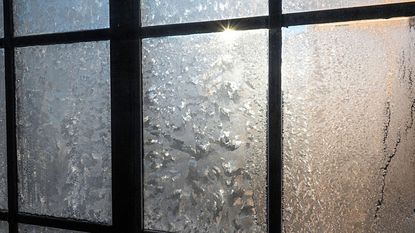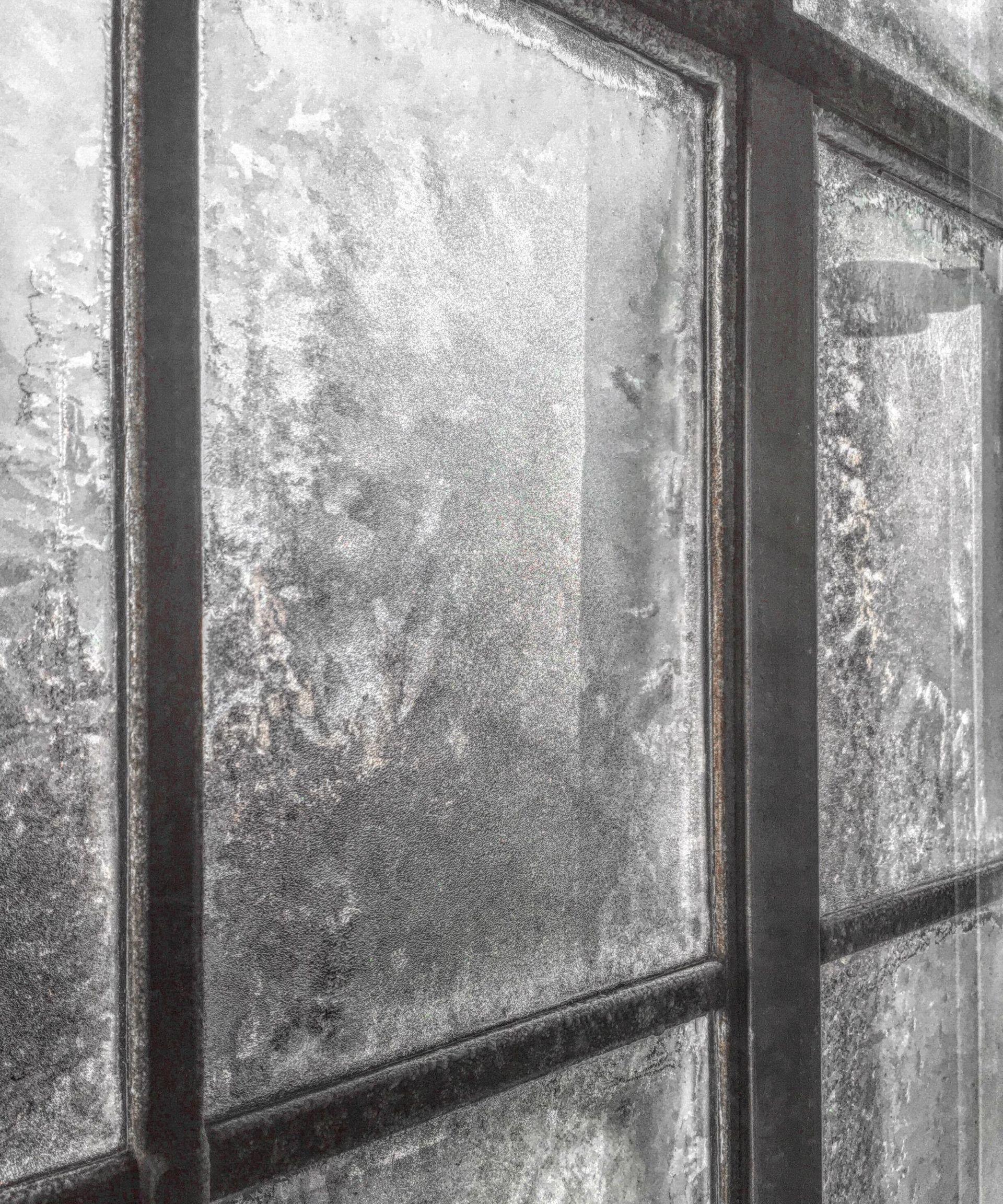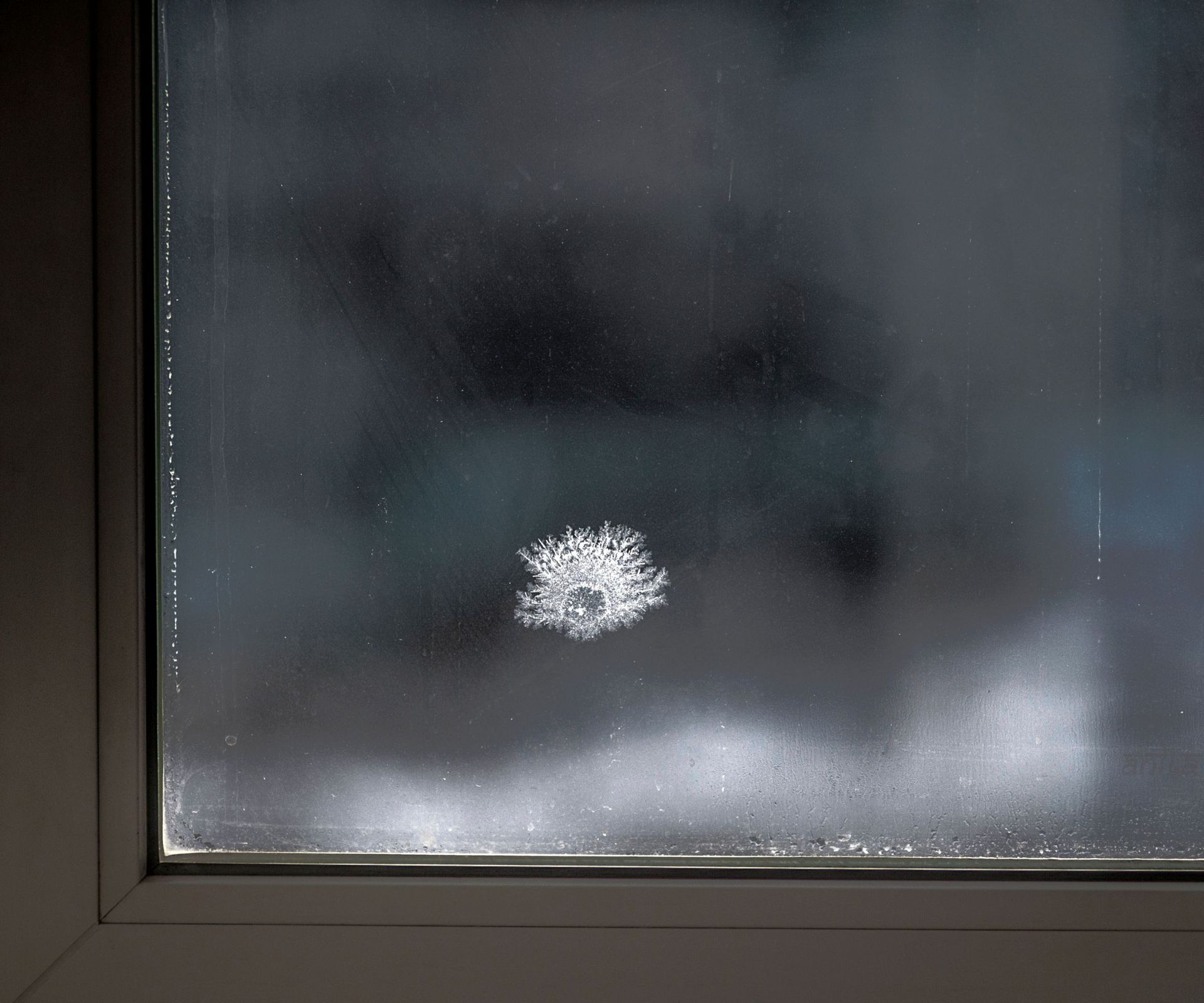The two main causes of frost on the inside of windows, and three ways to prevent it
Frosty windows can be magical during the holidays – as long as the frost is outside, that is. Here is what to do if the frost has made its way indoors
- (opens in new tab)
- (opens in new tab)
- (opens in new tab)
- Sign up to our newsletter Newsletter


Frost on the inside of windows may not be uncommon if you are used to living in freezing cold climates, but for anyone else, it can be a rather alarming sight – especially if it's your first time experiencing sudden drops in outdoor temperatures.
While a little bit of frost may not be cause for concern, large patches can be a sign of window damage or high indoor humidity both of which can be harmful to your home in the winter months.
Here, experts explain what causes frost on the inside of windows and what you can do to prevent it.
What causes frost on the inside of windows?

‘Frost on the inside of windows is often caused by cold, leaky air coming into contact with condensation build-up on the inside of a window,’ says Jason Orme, speaker at the Homebuilding & Renovating Shows, and author of The Self Build Dream. ‘Given that cooler air holds less water than warmer air, the cooler the internal temperature of your home, the more likely condensation is to form on glass panes. Even if you have a powerful heating system, leaking windows are still likely to condensate water.’
Although any window can be affected by internal frost, sliding windows are more susceptible to frost damage than others. Often found on houses in traditionally warmer climates, these types of windows are less able to form an air-tight seal around the frame, allowing outside air to leak indoors.
How to prevent frost on the inside of windows

Luckily, getting rid of frost on the inside of windows is often as simple as controlling the contributing factors.
1. Determine the cause of the frost to treat it at its source
When trying to prevent frost on the inside of windows, you will need to determine whether your frost is caused by excess humidity, a leaky window frame, or a combination of the two. If there is an air leak letting freezing air into your home and hot air out, for example, your main priority will be to block the gaps with sealant to prevent cold drafts that can freeze condensation.
If frost stems primarily from high indoor humidity, then turning up your home heating and investing in a dehumidifier you can afford can help to combat surplus moisture in the air. This combination will not only help to dry your home out but keep it warmer throughout winter too.
2. Ensure your insulation is sufficient and there are no gaps and cracks around the window
‘Making sure your home is better insulated can also really help when tackling condensation and dampness,’ says Adam Pawson from leading window retailer, Safestyle (opens in new tab). ‘Double glazing, wall insulation, and draft-proofing will help to reduce the amount of heat that is lost in your home. Having well-installed, energy-efficient windows will help to keep the property's temperature high which can have a massive impact on condensation and mold growth.’
3. Avoid making condensation worse to prevent a build-up of freezable water on windows
Avoiding creating excess condensation inside your property and understanding how to get rid of condensation inside windows is another great way to prevent frost developing.
‘Reducing how much moisture is in the air can have a huge impact on tackling condensation dampness. Little changes such as having your tumble dryer vented outside and hanging washing in airy spaces, instead of drying it inside warm rooms, can really help to keep moisture at bay,’ says Adam Pawson.
‘If you do start to see water beads appearing on or around your windows when the temperature outside begins to drop, make sure that you’re clearing the area on a daily basis. We’d suggest using a microfiber cloth to remove any dampness, before applying any cleaning solution.’
When carrying out daily tasks such as cooking or showering, making sure you turn on the exhaust fan 10 or 20 minutes beforehand will help to create an air stream to carry excess moisture outside and prevent condensation build-up too.
What does frost on the inside of windows mean?
Frost on the inside of windows often means that the humidity of your room is too high and/or you have a draft entering your property. A cold air stream entering a room can change the space's moisture levels, creating condensation n window panes which can rapidly form ice crystals when left to sit for a just few hours.
Is it normal to have ice build up on the inside of windows?
Frost on the inside of windows in extremely cold temperatures is relatively normal, however in milder climates frost on the inside of windows could be a sign of a gap, damage, or improper insulation.

Chiana is a junior writer for Homes & Gardens having joined Future plc as a new graduate in 2022 after achieving a 1st class degree in Literature at university. She first became interested in design as a child after spending her summers helping her parents redecorate her childhood home. As a long-time reader of Future’s homes titles, Chiana is constantly finding new inspiration at work as she focuses on emerging trends, how-to’s, and news pieces.
-
-
 Robert Pattinson just bought a Spanish Colonial-style home – with an interior designer past
Robert Pattinson just bought a Spanish Colonial-style home – with an interior designer past'The Batman's' Robert Pattinson and Suki Waterhouse purchased the Jeff Lewis-designed Hollywood Hills estate for $5.3 million
By Megan Slack • Published
-
 7 expert-approved methods to remove candle wax from carpet
7 expert-approved methods to remove candle wax from carpetCleaning professionals share their tips on how to remove candle wax from carpet
By Millie Hurst • Published

